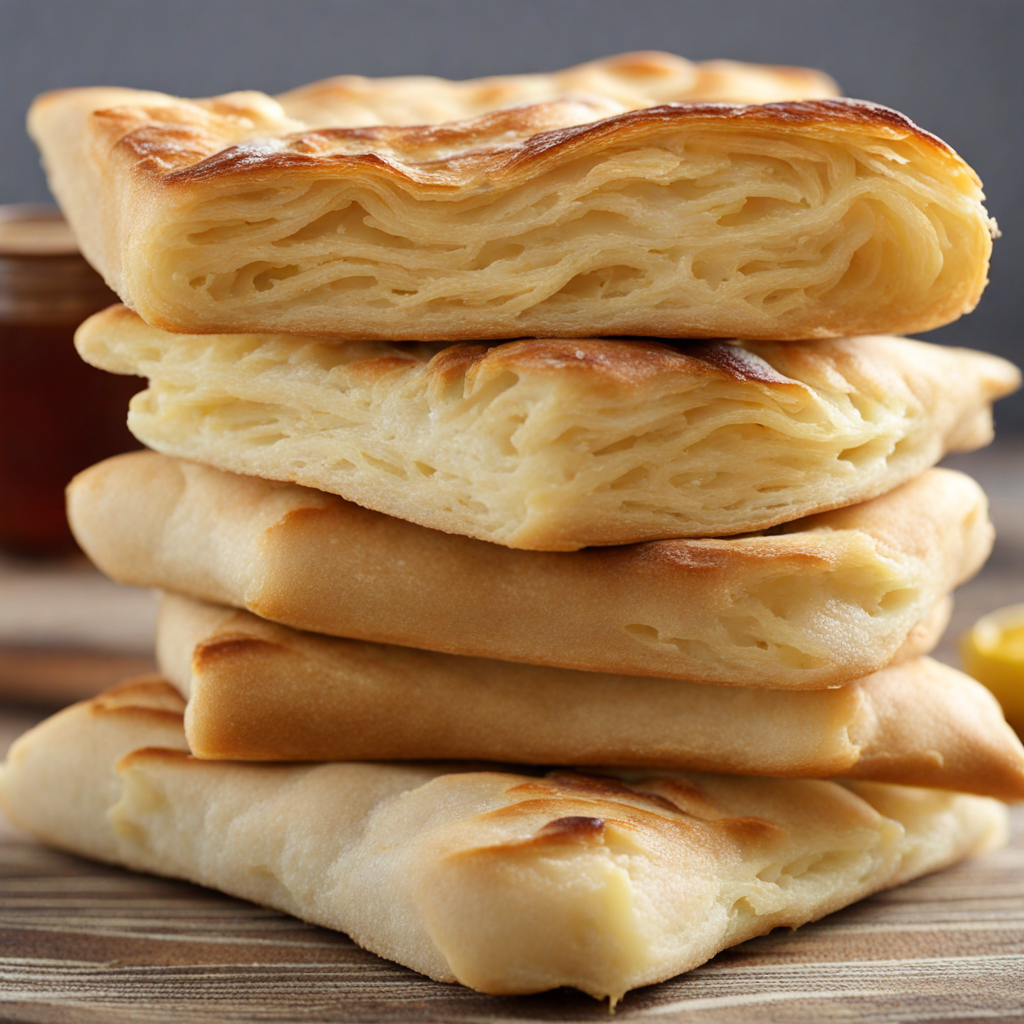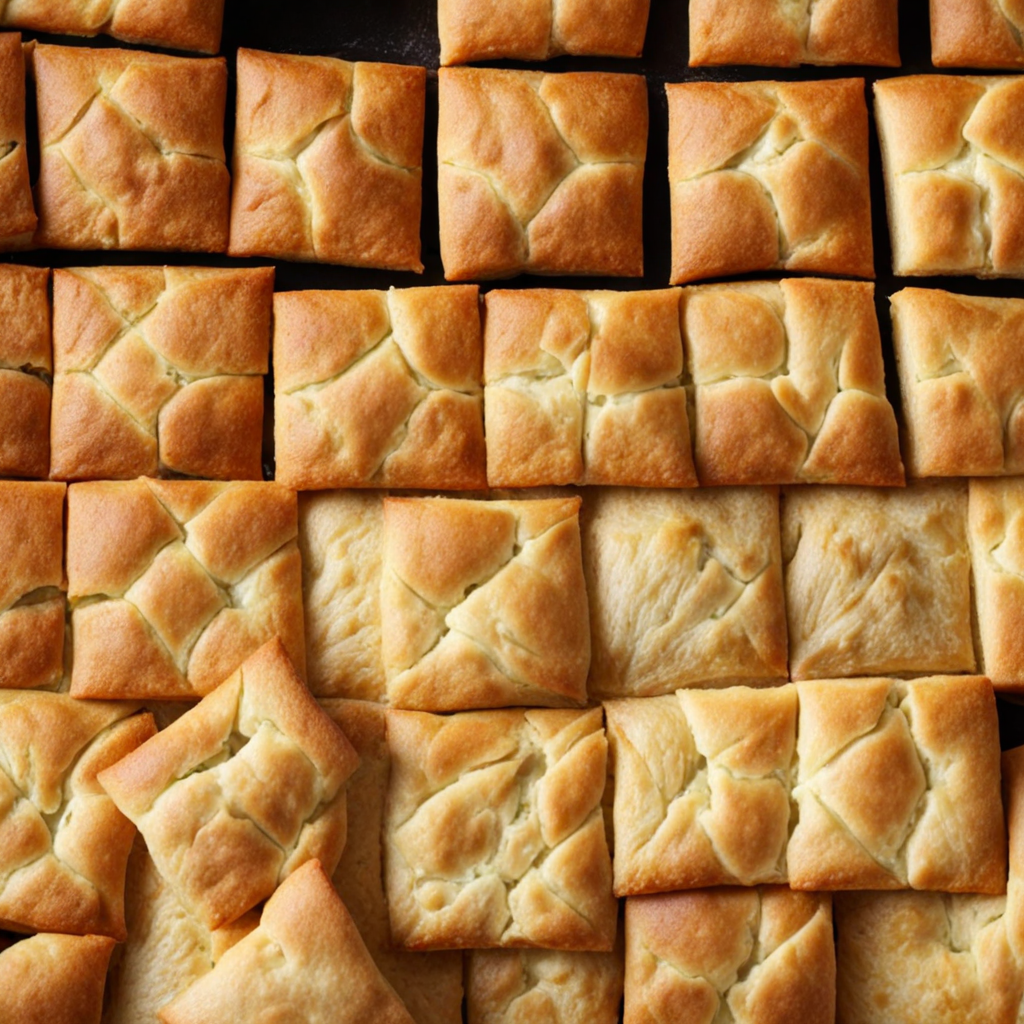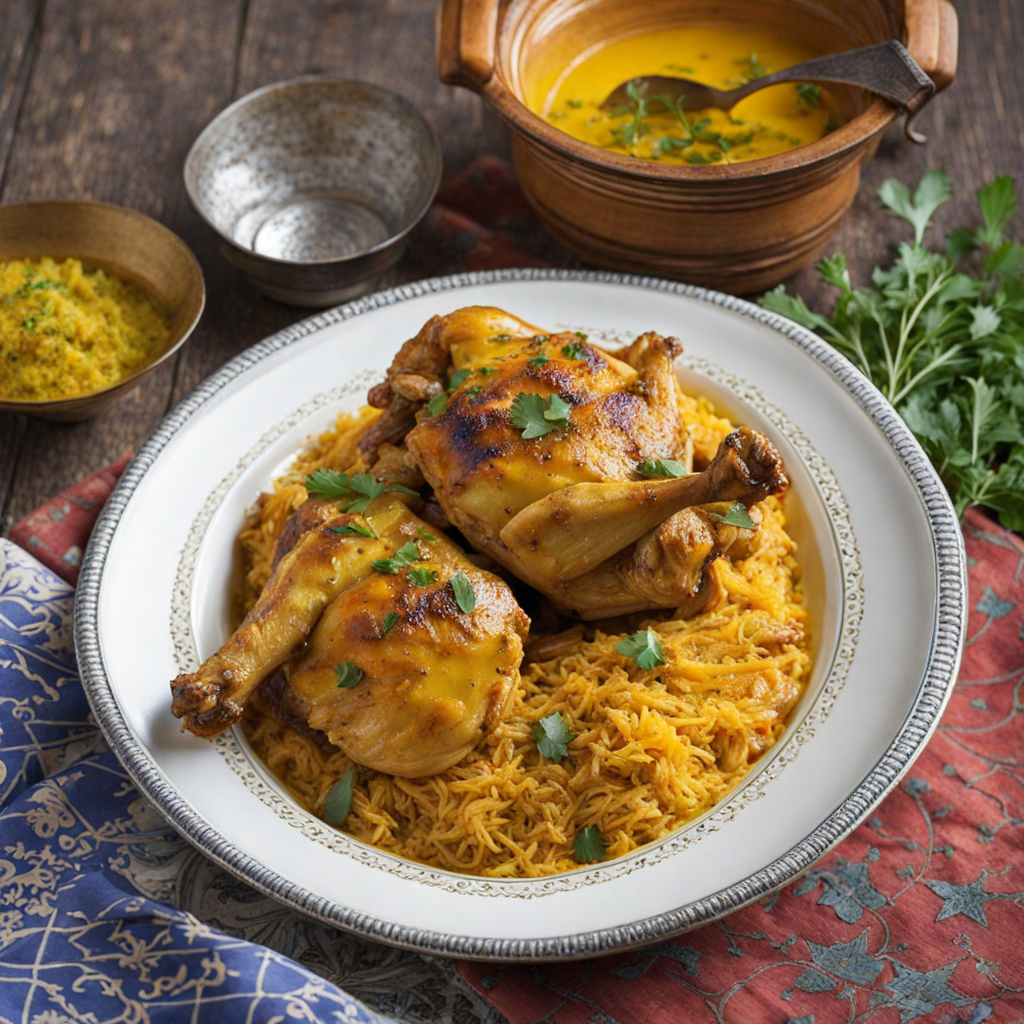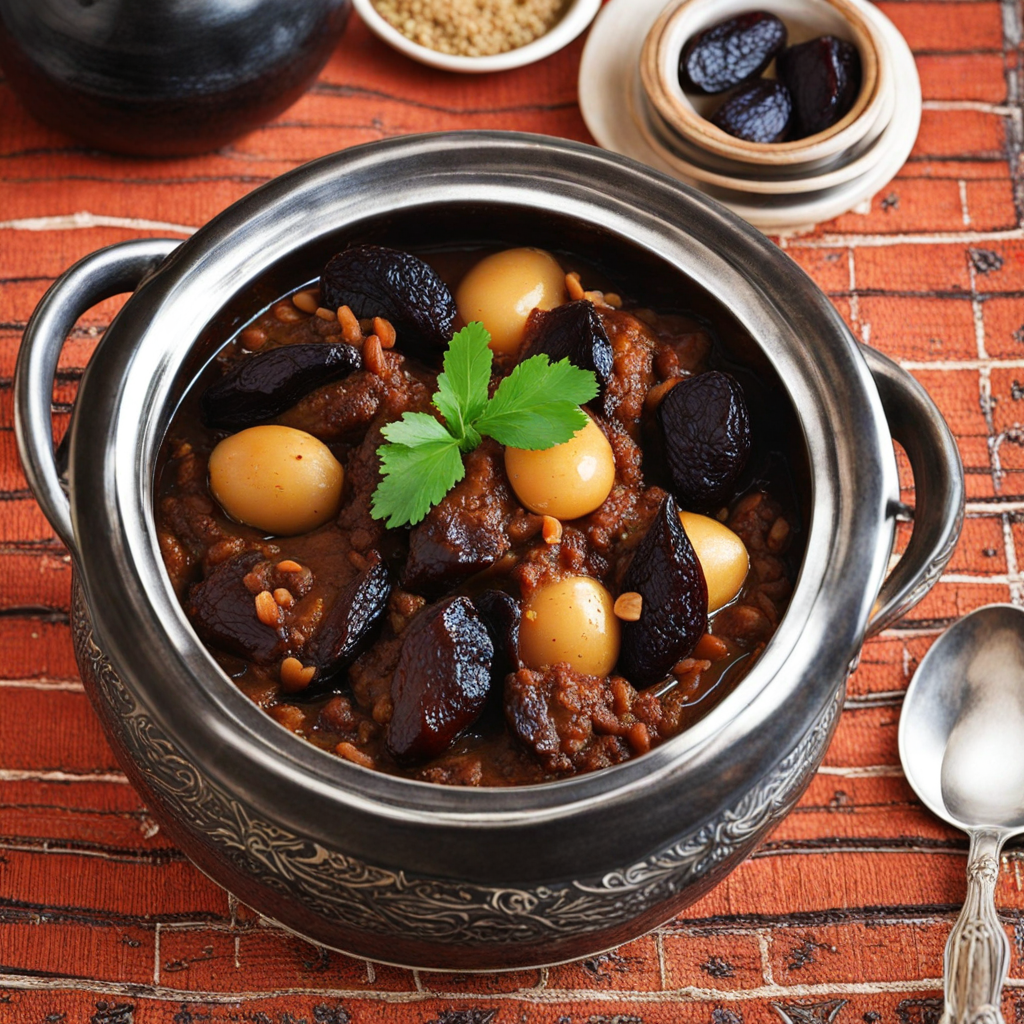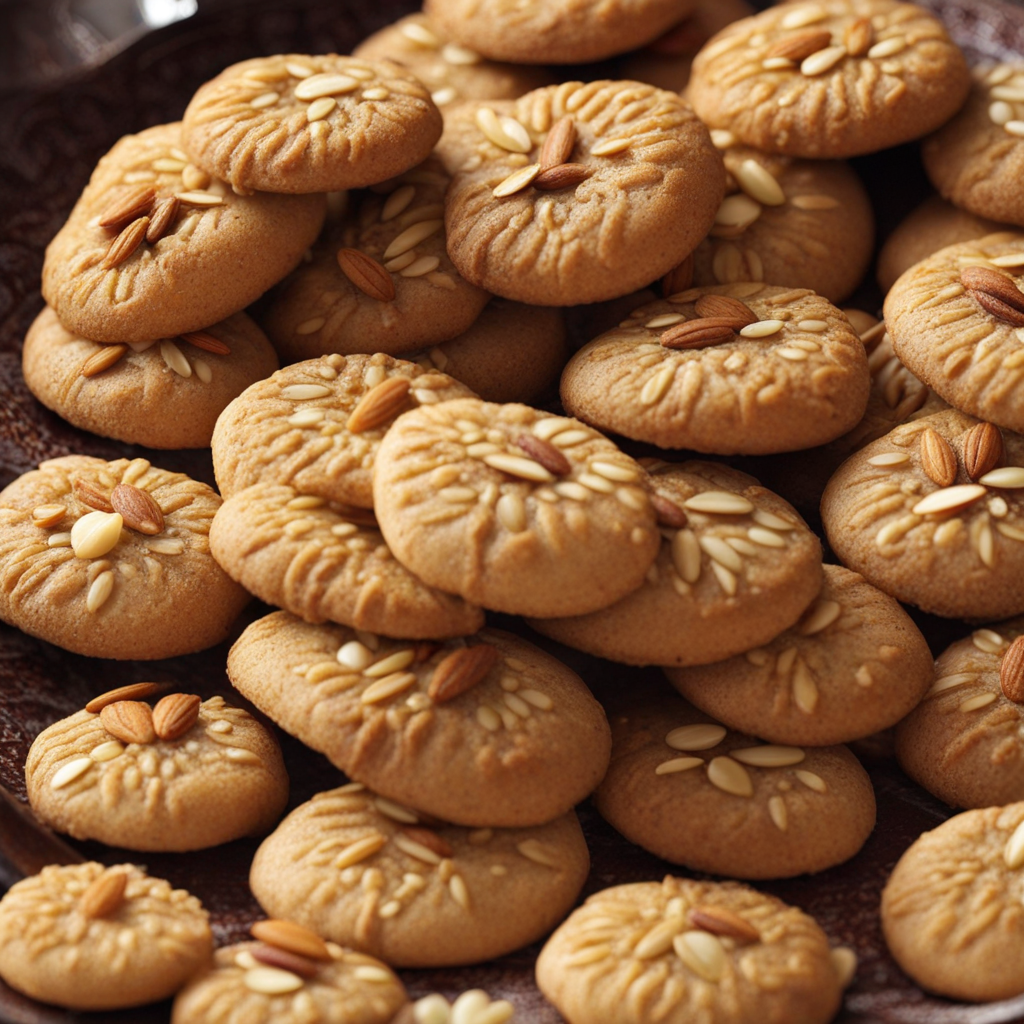Msemen
مسمن, also known as msemen, is a traditional Moroccan flatbread that has captured the hearts and palates of those who encounter it. This delightful dish is characterized by its flaky, layered texture and is often served as a breakfast item or a snack throughout the day. The origins of msemen can be traced back to the Berber culture, where it was initially crafted as a staple food. Over centuries, it has evolved and adapted to incorporate regional flavors and cooking techniques, becoming a beloved component of Moroccan cuisine. The flavor profile of مسمن is rich and multifaceted. When prepared properly, it boasts a nutty, buttery taste, thanks to the use of semolina and the generous application of ghee or oil during the cooking process. The outer layer crisps up beautifully when cooked on a hot griddle, while the inner layers remain soft and pliable, creating a delightful contrast in texture. Msemen can be enjoyed plain or filled with a variety of ingredients, including spiced vegetables, cheeses, or even sweet fillings like honey and almond paste, which further enhance its versatility. Preparation of مسمن is an art that requires skill and patience. The primary ingredients include semolina flour, all-purpose flour, water, salt, and ghee or vegetable oil. To begin, the two types of flour are combined with salt, and water is gradually added until a soft, pliable dough forms. This dough is then kneaded until smooth and left to rest, allowing the gluten to
How It Became This Dish
The History of مسمن (Msemmen) in Morocco Introduction Msemmen, a beloved Moroccan flatbread, holds a prominent place in the culinary tapestry of Morocco. With its flaky layers, distinct texture, and ability to be served with a variety of accompaniments, Msemmen is not just a staple food but a cultural emblem that showcases the rich history and traditions of Moroccan cuisine. This engaging exploration delves into the origins, cultural significance, and evolution of Msemmen, weaving a narrative that highlights its unique place in Moroccan society. Origins of Msemmen The origins of Msemmen can be traced back to the Berber people, the indigenous inhabitants of Morocco. The Berbers, known for their agricultural practices, relied heavily on grains, particularly wheat and barley, which formed the foundation of their diet. Msemmen, made primarily from flour, water, and a generous dose of oil or clarified butter, reflects this reliance on grains. The flatbread likely emerged in the rural heartlands of Morocco, where communal cooking and the sharing of food were integral to daily life. Initially, Msemmen may have been a simple bread, cooked on a hot stone or griddle, but over time, it evolved into the layered version known today. The name "Msemmen" itself derives from the Arabic root “s-m-m,” which means “to fold,” aptly describing the technique used to create the bread's flaky layers. Cultural Significance Msemmen is more than just food; it is a symbol of Moroccan hospitality and social interaction. Traditionally, it is prepared in homes and often served during significant occasions, such as weddings, religious celebrations, and family gatherings. The act of making Msemmen is often communal, with family members gathering to mix the dough, roll it out, and cook it together. This shared experience fosters bonds and highlights the importance of togetherness in Moroccan culture. In many Moroccan households, Msemmen is typically enjoyed for breakfast or as a snack, served alongside honey, jam, or a warm cup of mint tea. Its versatility allows it to be filled with various ingredients, including spiced ground meat, vegetables, or cheese, showcasing the regional diversity of Moroccan cuisine. The flatbread's ability to adapt to different flavors and fillings makes it a favorite across the country, whether in bustling cities like Marrakech and Fes or in the quieter rural settings. Development Over Time As Morocco experienced various cultural influences throughout its history, Msemmen also evolved, incorporating new techniques and flavors. The arrival of the Arab conquerors in the 7th century introduced new culinary practices and ingredients, which enriched the local food culture. The use of spices, such as cumin and coriander, began to find their way into Msemmen fillings, enhancing its flavors and appeal. During the French protectorate in the early 20th century, Moroccan cuisine witnessed further transformation. French culinary techniques and ingredients influenced the way Msemmen was prepared and served. The introduction of butter and refined flour allowed for an even flakier texture, making it a more indulgent treat. The use of Msemmen in cafés and restaurants increased during this period, particularly in urban centers, where it became a popular choice for breakfast or an afternoon snack. In contemporary Morocco, Msemmen continues to thrive as a beloved dish, transcending generations while remaining deeply rooted in tradition. Street vendors and local bakeries offer their unique takes on Msemmen, often experimenting with fillings and cooking methods. The rise of gastronomic tourism has also contributed to the dish's popularity, as visitors seek authentic culinary experiences. Cooking classes and food tours centered around traditional Moroccan cooking often feature Msemmen, allowing tourists to engage directly with the culture through its food. Msemmen in Modern Moroccan Cuisine In recent years, there has been a resurgence of interest in traditional cooking methods and recipes, as people increasingly seek to reconnect with their culinary heritage. Msemmen has found its place in this movement, celebrated not only for its taste but also for the stories it tells about Moroccan culture and history. Chefs and home cooks alike experiment with innovative fillings, from savory to sweet, while still honoring the foundational aspects of the bread. Culinary festivals and food markets highlight Msemmen, where it is showcased alongside other Moroccan specialties. The bread is often presented at communal tables during celebrations, emphasizing the spirit of sharing and community that is central to Moroccan dining culture. Its presence at these events reinforces the idea that food is a means of connection, not just sustenance. Conclusion The history of Msemmen is a rich tapestry woven with threads of culture, tradition, and community. From its Berber origins to its contemporary status as a beloved Moroccan flatbread, Msemmen reflects the resilience and adaptability of Moroccan cuisine. It is a testament to the power of food to bring people together, to celebrate heritage, and to create lasting memories. As Morocco continues to evolve, so too does Msemmen, remaining a cherished part of the culinary landscape and a symbol of the vibrant culture that defines this North African nation. Whether enjoyed in a bustling café or made at home with family, Msemmen stands as a delicious reminder of Morocco's rich culinary history, a bridge to the past that continues to nourish the present.
You may like
Discover local flavors from Morocco


